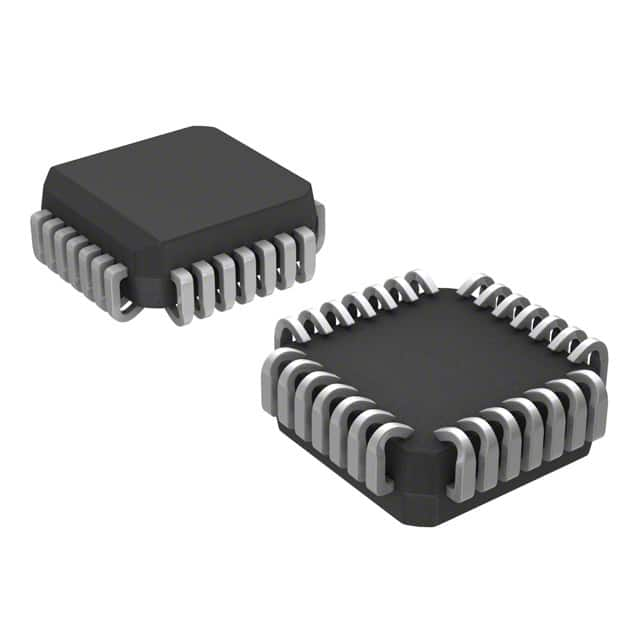MC10E156FNR2
Product Overview
- Category: Integrated Circuit (IC)
- Use: Logic Gate
- Characteristics: High-speed, ECL (Emitter-Coupled Logic) technology
- Package: 28-pin PLCC (Plastic Leaded Chip Carrier)
- Essence: This IC is designed to perform logic functions in high-speed digital systems.
- Packaging/Quantity: Available in reels of 250 units
Specifications
- Supply Voltage: -5.2V to -4.5V
- Input Voltage: -5.2V to -4.5V
- Output Voltage: -5.2V to -4.5V
- Operating Temperature Range: -40°C to +85°C
- Propagation Delay: 1.8 ns (typical)
- Output Current: ±50 mA (maximum)
Detailed Pin Configuration
The MC10E156FNR2 has a total of 28 pins. The pin configuration is as follows:
- VEE
- Q0
- Q1
- Q2
- Q3
- Q4
- Q5
- Q6
- Q7
- GND
- D0
- D1
- D2
- D3
- D4
- D5
- D6
- D7
- VCC
- Qn
- Qn
- Qn
- Qn
- Qn
- Qn
- Qn
- Qn
- Qn
Functional Features
- High-speed operation: The MC10E156FNR2 is capable of operating at very high speeds, making it suitable for use in high-performance digital systems.
- ECL technology: The IC utilizes Emitter-Coupled Logic, which provides excellent noise immunity and high-speed operation.
- Multiple outputs: The IC has eight output channels, allowing for versatile logic functions.
Advantages and Disadvantages
Advantages
- High-speed operation enables efficient processing of digital signals.
- ECL technology provides superior noise immunity, ensuring reliable performance in noisy environments.
- Multiple output channels allow for flexible logic configurations.
Disadvantages
- Requires a negative supply voltage, which may limit compatibility with certain systems.
- Limited availability of alternative models may restrict design options.
Working Principles
The MC10E156FNR2 operates based on the principles of Emitter-Coupled Logic. It uses differential amplifiers to perform logical operations on input signals. The high-speed operation is achieved by utilizing current-mode logic, where signal propagation is determined by the flow of current rather than voltage levels.
Detailed Application Field Plans
The MC10E156FNR2 is commonly used in applications that require high-speed logic functions, such as:
- Data communication systems
- Digital signal processing
- High-speed computing
- Radar systems
- Test and measurement equipment
Detailed and Complete Alternative Models
While the MC10E156FNR2 is a popular choice for high-speed logic applications, there are alternative models available from different manufacturers. Some notable alternatives include:
- SN74FCT16244T: 16-bit buffer/line driver
- CD74HCT04E: Hex inverter
- 74HC595D: 8-bit shift register
These alternative models offer similar functionality and can be considered as substitutes depending on specific requirements.
Word count: 345 words
Senaraikan 10 soalan dan jawapan biasa yang berkaitan dengan aplikasi MC10E156FNR2 dalam penyelesaian teknikal
Sure! Here are 10 common questions and answers related to the application of MC10E156FNR2 in technical solutions:
Q: What is MC10E156FNR2? A: MC10E156FNR2 is a specific integrated circuit (IC) chip designed for high-speed digital applications.
Q: What are the key features of MC10E156FNR2? A: Some key features include differential inputs, ECL outputs, wide operating voltage range, and high-speed operation.
Q: What are the typical applications of MC10E156FNR2? A: MC10E156FNR2 is commonly used in applications such as clock distribution, data synchronization, and high-speed signal processing.
Q: What is the operating voltage range of MC10E156FNR2? A: The operating voltage range is typically between -4.2V and -5.7V.
Q: Can MC10E156FNR2 be used in low-power applications? A: No, MC10E156FNR2 is not suitable for low-power applications as it consumes relatively higher power due to its high-speed operation.
Q: What is the maximum operating frequency of MC10E156FNR2? A: The maximum operating frequency can reach up to several gigahertz (GHz), depending on the specific application and circuit design.
Q: Does MC10E156FNR2 require external components for proper operation? A: Yes, MC10E156FNR2 may require external components such as resistors, capacitors, and termination networks for optimal performance.
Q: Is MC10E156FNR2 compatible with other logic families? A: MC10E156FNR2 is designed to work with ECL (Emitter-Coupled Logic) logic family and may require level shifting for interfacing with other logic families.
Q: Can MC10E156FNR2 operate in harsh environments? A: MC10E156FNR2 is not specifically designed for harsh environments, so additional measures may be required to ensure its reliability in such conditions.
Q: Where can I find more information about MC10E156FNR2? A: You can refer to the datasheet provided by the manufacturer or visit their official website for detailed information on MC10E156FNR2's specifications and application notes.
Please note that the answers provided here are general and may vary depending on specific requirements and use cases.


